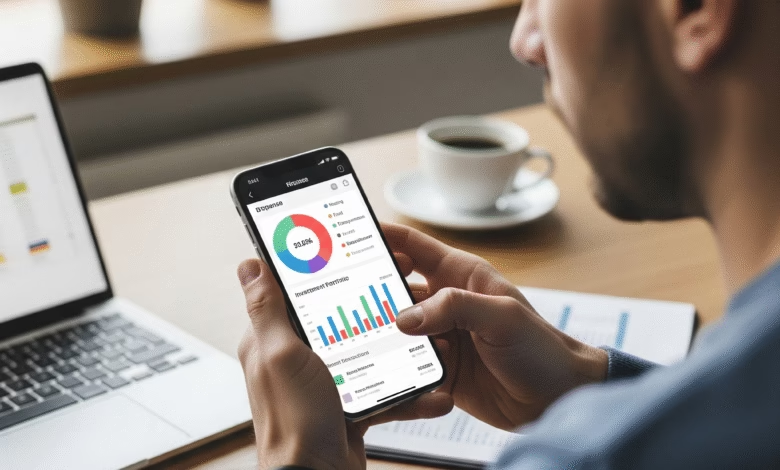How to Start Investing with $100 in 2025
Learn how to build a solid portfolio even if you’re starting small

For years, the world of investing was seen as an exclusive club reserved for the wealthy. It was a place where you needed thousands of dollars to open an account, and the complexity of the markets seemed to require a degree in finance.
But that’s a myth from the past. In 2025, starting your investment journey is more accessible than ever before. Thanks to technological advancements and a shift in the financial industry, you no longer need a large sum of money to begin. In fact, you can start building long-term wealth with as little as $100.
This comprehensive guide will show you exactly how to do it. We’ll break down the process into simple, actionable steps, from preparing your money to choosing the right investments and avoiding common mistakes.
What Is the #1 Rule of Investing with Little Money?

The single most important rule when you’re starting with a small amount of money is to start now. It’s not about how much you invest; it’s about the time your money has to grow. This is all thanks to a powerful concept known as compound interest.
Compound interest is when the earnings from your investments begin to earn their own returns. It creates a snowball effect that is slow at first but becomes incredibly powerful over decades.
Think of it this way: a one-time investment of $100 could grow into a significant sum over 40 years. Now, imagine investing just $100 every single month. After 30 years, assuming a modest average annual return of 8%, your total contributions would be just $36,000, but your portfolio’s value could be well over $135,000. That’s the magic of compounding in action.
The biggest mistake a new investor can make isn’t losing money in the short term, but rather delaying their start. Don’t wait until you have “enough” money. Your most valuable asset is time.
How to Prepare Your Money Before You Invest a Single Dollar
Before you even think about buying your first stock or fund, you need to set up a solid financial foundation. Skipping these critical steps is a common mistake that can lead to major problems down the road.
1. Pay Off High-Interest Debt First
If you have credit card debt, personal loans, or any other debt with a high interest rate (usually 10% or more), your top priority should be paying it off. The interest you’re paying on this debt is likely much higher than the returns you’ll earn from a beginner investment. For example, if you’re paying 22% on a credit card, there’s no investment that can guarantee a higher, consistent return. Paying off this debt is a guaranteed return on your money.
2. Build an Emergency Fund
An emergency fund is a savings account with enough cash to cover 3 to 6 months of your essential living expenses. This money is your safety net. If you lose your job or face an unexpected expense, you won’t have to sell your investments at a loss to cover it. Your emergency fund allows you to ride out a market downturn and keep your long-term plan on track.
3. Define Your Financial Goals
Are you investing for retirement in 40 years? To save for a down payment on a house in 5 years? Or simply to learn about the market? Your goals will determine your investment timeline and the level of risk you should take. For long-term goals like retirement, you can afford to take on more risk. For shorter-term goals, a more conservative strategy is often best.
Where Can You Invest with Just $100 in 2025?

Just a few years ago, investing with $100 would have been almost impossible because many stocks trade for hundreds or even thousands of dollars per share. But today, the landscape is completely different.
Fractional Shares: The rise of fractional shares has been a game-changer for new investors. A fractional share is a portion of a single share of a stock or ETF. This means you don’t have to buy a whole share. If a company like Amazon trades at over $180 per share, you can simply buy $100 worth of it, and your brokerage will give you 0.55 of a share. This opens up the entire market to small investors, allowing you to build a diversified portfolio without a large sum of money.
Robo-Advisors: These are automated investment services that manage your portfolio for you. You answer a few questions about your goals and risk tolerance, and the robo-advisor creates a diversified portfolio and automatically invests your money. Many robo-advisors have very low minimums, often starting at $0 or $100. This is the ultimate “set it and forget it” solution for new investors.
Beginner-Friendly Brokerage Accounts: You’ll need to open an account with a brokerage firm to start investing. Look for companies that offer:
- No commissions: Most major brokerages now offer commission-free trading.
- No account minimums: You can open an account with as little as $0.
- Fractional shares: This is a non-negotiable feature for someone starting with $100.
- Low-cost ETFs and mutual funds: This ensures your money goes further.
The Best Investments for Beginners with $100 in 2025
Once you have your account open, your first investment should prioritize diversification and a low cost. You want to avoid putting your money into a single company, which is an extremely risky strategy. Instead, you’ll want to buy a broad “basket” of investments.
Exchange-Traded Funds (ETFs) and Index Funds are perfect for this. An ETF is a collection of stocks, bonds, or other assets that you can buy and sell on a stock exchange. When you buy a single share of an ETF, you’re instantly investing in hundreds or even thousands of different companies.
For example, a broad market ETF like the Vanguard S&P 500 ETF (VOO) tracks the performance of the 500 largest U.S. companies. Instead of trying to pick one winning stock, you’re buying a tiny slice of the entire U.S. economy’s top performers. This provides incredible diversification and reduces your risk.
Here are a few types of low-cost ETFs and index funds that are ideal for beginners:
- S&P 500 Index Fund/ETF: Tracks the 500 largest U.S. companies. This is a great core holding for any portfolio.
- Total Stock Market Index Fund/ETF: Tracks the entire U.S. stock market, from large companies to small ones. A great choice if you want maximum diversification.
- International Stock Fund/ETF: Tracks a broad range of companies outside the U.S. to diversify your portfolio globally.
Creating a Simple, Powerful $100 Investment Strategy

Your first $100 investment doesn’t have to be complicated. Here’s a simple, step-by-step strategy that will get you started on the right path:
Step 1: Open and Fund Your Account
Choose a brokerage that offers fractional shares and has no account minimums. Once the account is open, link your bank account and transfer your first $100.
Step 2: Invest in a Broad-Market ETF
With your $100, buy a fractional share of a broad-market ETF. Again, we recommend something like VOO (S&P 500 ETF) or VTI (Total Stock Market ETF). These funds are diversified, low-cost, and managed by experts.
Step 3: Set Up Automatic Investments
This is arguably the most important step. Set up an automatic transfer of a fixed amount of money (e.g., $25, $50, or $100) from your bank account to your investment account every month. This practice is known as dollar-cost averaging.
Dollar-cost averaging is the practice of investing a fixed amount of money at regular intervals. This strategy helps reduce risk because you’re buying more shares when prices are low and fewer shares when prices are high. This removes the emotion from investing and helps you build wealth consistently over time.
Common Beginner Investing Mistakes to Avoid with Your First $100
Just as important as knowing what to do is knowing what not to do. Avoiding these common mistakes can save you from costly errors and keep your investment journey on track.
- Trying to Time the Market: You’ll hear countless stories about people who “bought low” and “sold high.” In reality, no one can predict the market’s movements with consistent accuracy. It’s a waste of time and energy, and it often leads to buying and selling at the wrong times. The best strategy is simply to stay invested for the long term.
- Investing in Single Stocks: While it might seem exciting to invest in a single, well-known company, this is a very risky approach. If that company performs poorly, your entire investment could suffer. A diversified fund spreads your risk across many different companies, so if one performs poorly, your overall portfolio is protected.
- Ignoring Fees: Investment fees can seem small, but they add up significantly over time. A 1% fee might not seem like much on your $100 investment, but over 40 years, it can eat up a substantial portion of your returns. Always prioritize low-cost index funds and ETFs.
- Panicking During Downturns: The stock market is volatile. There will be good days and bad days, and market crashes are a normal part of the cycle. When the market goes down, it’s a test of your discipline. The worst thing you can do is panic and sell your investments at a loss. Remember, downturns are temporary, and historically, the market has always recovered and gone on to reach new highs.
Beyond $100: How to Build Your Portfolio Over Time

Investing with $100 is a fantastic start, but it’s just the beginning. As your income and financial situation improve, you can begin to scale your investments.
1. Increase Your Contributions: As your salary grows, make it a point to increase the amount you automatically invest each month. The more you can contribute, the faster your wealth will compound.
2. Open Tax-Advantaged Accounts: Once you’re comfortable with a basic brokerage account, explore tax-advantaged retirement accounts like a 401(k) (if your employer offers one) and a Roth IRA or Traditional IRA. These accounts offer significant tax benefits that can turbocharge your retirement savings.
3. Continue to Diversify: Over time, you can expand your portfolio to include other types of assets, such as international stocks and bonds, to create a well-rounded and resilient portfolio.
The journey to financial independence begins with a single step. Starting with $100 is not about getting rich quick; it’s about building a powerful habit of saving and investing that will serve you for the rest of your life. The future you will thank you for getting started today.





